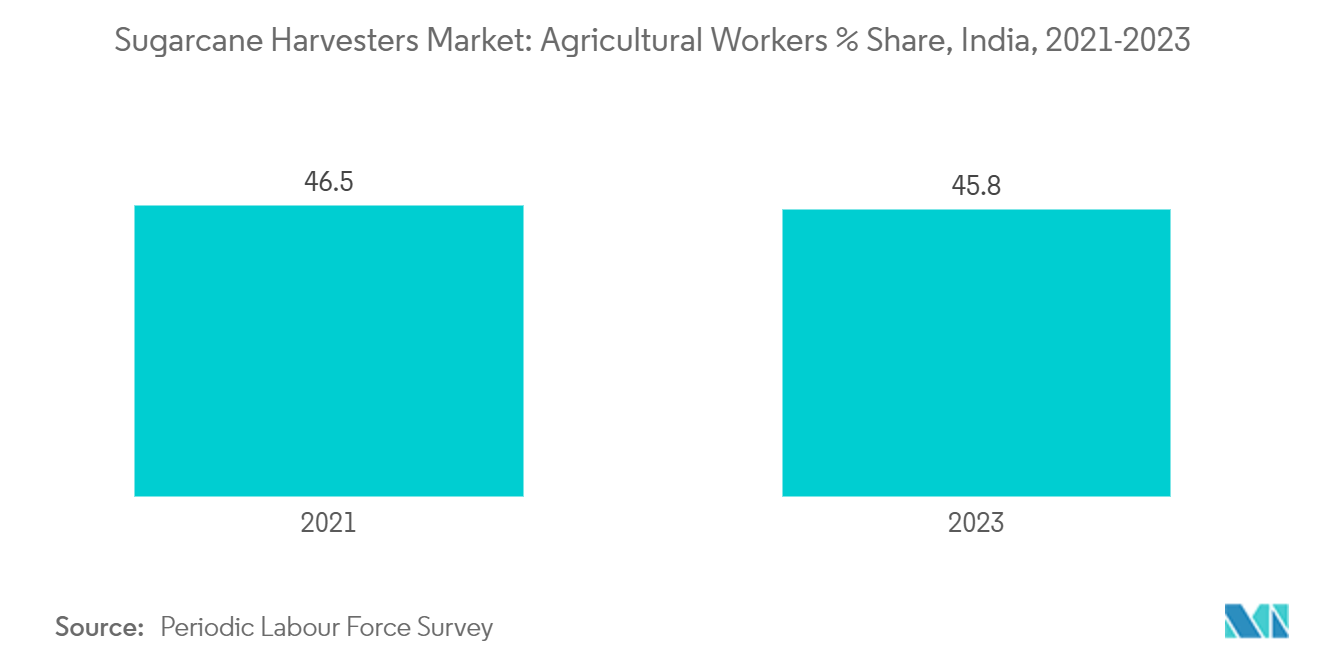Market Trends of Sugarcane Harvesters Industry
Decline in Farm Labor Driving the Market for Sugarcane Harvesters
- Developing economies traditionally have higher percentages of their population engaged in agriculture, though these figures have decreased over time due to urbanization. The Indian Council of Food and Agriculture (ICFA) forecasts a 25.7% decline in India's agricultural workforce by 2050, driving up demand for agricultural equipment. A United States Department of Agriculture (USDA) report indicates that farm employment, which forms the majority of agricultural jobs, decreased by 81% over the past decade, with labor hours worked falling by 83%. This decline is attributed to workers seeking higher wages and alternative income sources in non-agricultural sectors.
- The agricultural landscape has shifted towards fewer, larger farms and the adoption of labor-saving technologies such as more powerful tractors, combines, and automated feeding systems, reducing the need for farm workers. While the total hours worked continued to decrease in the last decade of the study, the rate of decline slowed compared to previous decades. This trend has led to increased demand for agricultural machinery, including sugar harvesters, which is expected to grow during the forecast period. Sugarcane harvesters have become crucial for farmers, offering efficiency and cost-effectiveness while boosting productivity. However, the mechanization of the sugarcane sector, particularly in harvesting, remains limited in Southeast Asia compared to major producing markets like Brazil, other South American countries, India, and China.

Asia-Pacific is the Fastest-growing Market
- The Asia-Pacific region is expected to be the fastest-growing market for sugarcane harvesters, with India as the dominant market. Technological innovations tailored to the specific needs of Indian farmers are driving market growth. The decline in the agricultural workforce in countries like India and China is increasing farmers' dependence on farming machinery, particularly for post-harvesting activities.
- India relies heavily on efficient sugarcane harvesting techniques to maintain its position in the global market. The mini sugarcane harvester has gained popularity due to its affordability, ease of operation, and suitability for small to medium-sized farms. John Deere and New Holland are among the prominent companies introducing sugarcane harvesters in India.
- Labor scarcity and high wage rates have affected timely crop harvesting in recent years. To address labor shortages, the Indian government has provided subsidized machinery to farmers, allowing usage with appropriate safety features. The "Sub-Mission on Agricultural Mechanization" scheme, launched by the government, offers financial assistance to farmers for purchasing sugarcane harvesters. This initiative has significantly increased the adoption of mechanized harvesting methods, driving demand for sugarcane harvesters in the region.
- The Asia Pacific region has seen increased sugar consumption due to population growth, urbanization, and changing dietary habits. This heightened demand has led to an expansion of sugarcane cultivation areas from 10.3 million hectares in 2020 to more than 10.9 million hectares in 2023. Countries such as Thailand and Indonesia have focused on improving productivity, directly contributing to the growing need for efficient harvesting equipment. The market's growth in the coming years is expected to be enhanced by anticipated improvements in weather conditions, stable sugarcane prices, and continued government support.


